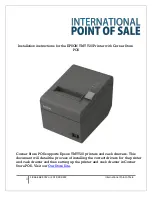
Device Management
Page 137
20.5
Auto Discovery
Device Management > Auto Discovery
20.5.1
Advertise the TC620-PID
On the Auto Discovery tab, you can enable UPnP (Universal Plug and Play). If enabled, UPnP
allows the TC620-PID to advertise its presence and services to control points on the network. A
control point can be a network device with embedded UPnP, a VMS application or a spy software
tool, such as Device Spy. With the UPnP service enabled in Windows (see
Appendix: Enable UPnP
in Windows 7
), you can connect to the TC620-PID from Windows Explorer.
20.5.1.1
Note
Note on UPnP:
The goal of Universal Plug and Play (UPnP), a set of computer network protocols,
is to enable peer-to-peer simple and robust connectivity among stand-alone devices and PCs
from different vendors. UPnP networking involves (some or all of) the following steps.
Step 1:
Discovery
. Devices advertise their presence and services to a control point on the
network. Control points can search for devices on the network. A discovery message is
exchanged, containing a few essential specifics about the devices, e.g. its type, identifier and a
pointer to more detailed information.
Step 2:
Description
. The control point can request the device's description from the URL
provided in the discovery message. The device description is expressed in XML and includes
vendor-specific information, such as the model name, serial number, manufacturer name, URLs
to vendor-specific web sites.
Step 3:
Control
. The control point can send actions to a device's service.
Step 4:
Event
. The control point listens to state changes in the devices.
Step 5:
Presentation
. If a device has a URL for presentation, the control point can display a page
in a web browser, and – if the page offers these capabilities - allow the user to control the device
and/or view the device status.
The TC620-PID supports the following Universal Plug and Play (UPnP) functionality:
Discovery
,
Description
(partly supported), and
Presentation
.
















































